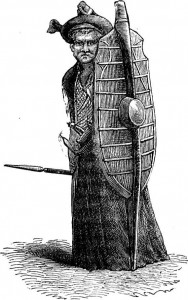The Battahs of Sumatra

The following five rare articles are based on some very early accounts of missionary work among the cannibalistic Battahs of Sumatra in Western Indonesia.
John T. Beighton, “The Battahs of Sumatra. A New Chapter in Missionary Annals, I,” Sunday at Home No. 1836 (July 6th 1889): 427-429. Click here to download.
John T. Beighton, “The Battahs of Sumatra. A New Chapter in Missionary Annals, II,” Sunday at Home No. 1838 (July 20th 1889): 456-458. Click here to download.
John T. Beighton, “The Battahs of Sumatra. A New Chapter in Missionary Annals, III,” Sunday at Home No. 1840 (August 3rd 1889): 488-489. 490-494. Click here to download.
John T. Beighton, “The Battahs of Sumatra. A New Chapter in Missionary Annals: IV. – Signal Progress,” Sunday at Home No. 1845 (September 7th 1889): 570-573. Click here to download.
John T. Beighton, “The Battahs of Sumatra. A New Chapter in Missionary Annals: V,” Sunday at Home No. 1847 (September 21st 1889): 602-604. Click here to download.
The Battahs of Sumatra. A New Chapter in Missionary Annals
Part I
John T. Beighton
One brilliant morning, some sixty years ago, two little boys were playing on a beach of sand, near Deli, on the eastern coast of the island of Sumatra. Their home was not on the coast, but amongst mountains in the interior whence they had come with their friends who had brought produce for sale. These boys were Battahs. While they were playing, a Malay prahu (boat), which had not been observed by them, was paddled up to where they were, and two men jumped out, seized them, and dragged them to the boat and carried them off. The boys were sold as slaves to a European at Singapore. Soon after they accompanied their master on a voyage to Penang, and there, as he treated them unkindly, they fled from him. Eventually they found a home in my father’s service, and were named Tim and Tom. Tim ran away again, but the other, though older than myself, became my companion and friend, and in the year 1839 he was publicly baptised. It is therefore but natural that I should be interested in the Battahs. The Encylopaedia Britannica (vol. xxii. p. 640) may well speak of them “as one of the most interesting of all the savage or semi-savage peoples” in the world.
A considerable portion of the Battah race is now under the rule of the Dutch government. Differing as the various communities do in their physical and social characteristics, even in their natural condition, it is necessary to a true knowledge of the race that we should travel beyond those dwelling under this rule, and in the outer fringes of the Battah country, to the independent communities found in the original and central home of the race. The people appear to have naturally an inordinate dislike to occupying the districts contiguous to the sea, and at one time shrank from even the sight of the sea, believing it to be peopled with demoniacal spirits. To know therefore the real Battah, we must leave those of the tribe who have become familiar with it, and are settled near the boundary lines of their fatherland, and penetrate into the recesses of the regions which surround the great inland lake of Tobah.
Click here to continue reading.
